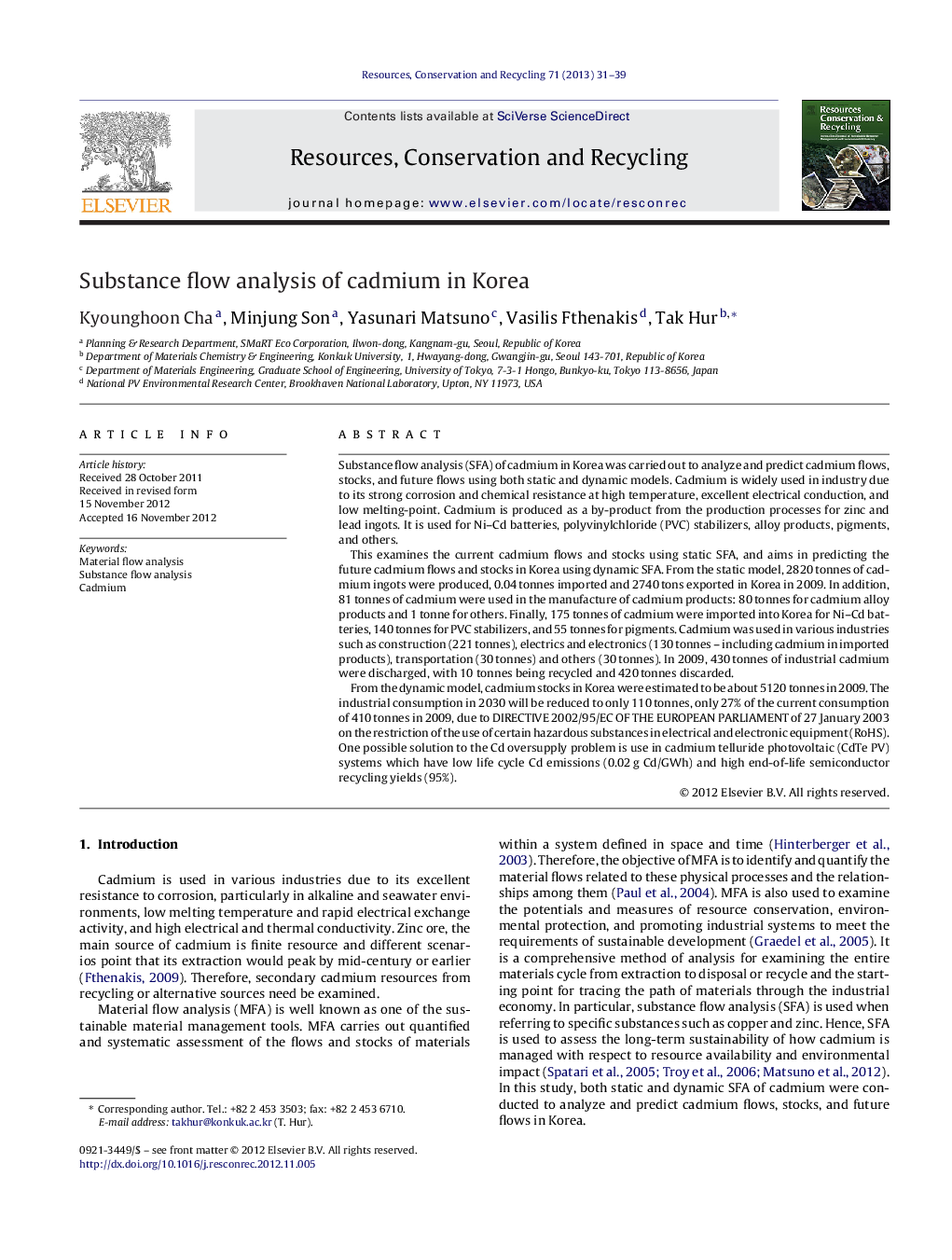| Article ID | Journal | Published Year | Pages | File Type |
|---|---|---|---|---|
| 1063207 | Resources, Conservation and Recycling | 2013 | 9 Pages |
Substance flow analysis (SFA) of cadmium in Korea was carried out to analyze and predict cadmium flows, stocks, and future flows using both static and dynamic models. Cadmium is widely used in industry due to its strong corrosion and chemical resistance at high temperature, excellent electrical conduction, and low melting-point. Cadmium is produced as a by-product from the production processes for zinc and lead ingots. It is used for Ni–Cd batteries, polyvinylchloride (PVC) stabilizers, alloy products, pigments, and others.This examines the current cadmium flows and stocks using static SFA, and aims in predicting the future cadmium flows and stocks in Korea using dynamic SFA. From the static model, 2820 tonnes of cadmium ingots were produced, 0.04 tonnes imported and 2740 tons exported in Korea in 2009. In addition, 81 tonnes of cadmium were used in the manufacture of cadmium products: 80 tonnes for cadmium alloy products and 1 tonne for others. Finally, 175 tonnes of cadmium were imported into Korea for Ni–Cd batteries, 140 tonnes for PVC stabilizers, and 55 tonnes for pigments. Cadmium was used in various industries such as construction (221 tonnes), electrics and electronics (130 tonnes – including cadmium in imported products), transportation (30 tonnes) and others (30 tonnes). In 2009, 430 tonnes of industrial cadmium were discharged, with 10 tonnes being recycled and 420 tonnes discarded.From the dynamic model, cadmium stocks in Korea were estimated to be about 5120 tonnes in 2009. The industrial consumption in 2030 will be reduced to only 110 tonnes, only 27% of the current consumption of 410 tonnes in 2009, due to DIRECTIVE 2002/95/EC OF THE EUROPEAN PARLIAMENT of 27 January 2003 on the restriction of the use of certain hazardous substances in electrical and electronic equipment (RoHS). One possible solution to the Cd oversupply problem is use in cadmium telluride photovoltaic (CdTe PV) systems which have low life cycle Cd emissions (0.02 g Cd/GWh) and high end-of-life semiconductor recycling yields (95%).
► The SFA of cadmium has been conducted using both static and dynamic models in Korea. ► Cadmium was used in construction (221 t), electrics and electronics (130 t), others (30 t), and transportation (30 t). ► In 2009, 430 t of industrial cadmium were discharged, with 10 t being recycled and 420 t discarded. ► The industrial cadmium consumption in 2030 will be 110 tonnes, which is only 27% of the current consumption of 410 tonnes in 2009.
